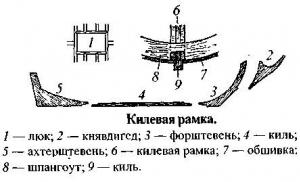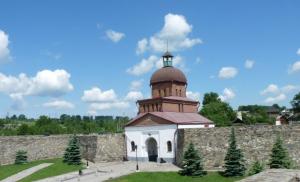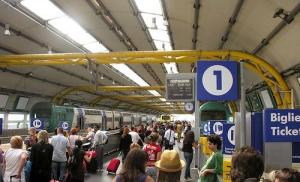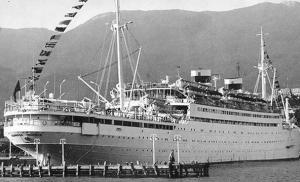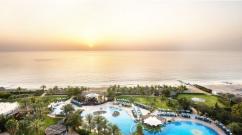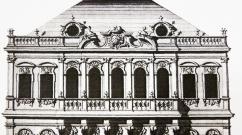Castles of Edward I Wales, UK. Castles of Edward I Wales, UK Island of Anglesey - Beaumaris Castle and the town of Llanwyre-Pullgwyngill
Caerphilly of the 13th century still makes an indelible impression today with its scale and power. It is superbly preserved and embodies an entire era. Over the course of a long history, the castle was attacked, rebuilt, and restored. Today it is one of the most visited attractions in Wales.
Where is
Caerphilly Castle is located in the county town of the same name in south Wales. The city is located on the border between the counties of Glamorgan and Monmouthshire. Belongs to the administrative unit - the district of Glamorgan, county of Wales. The town of Caerphilly has county status and is one of the most visited tourist sites. The region is located in a mountainous area, and the fortress was built on top of a hill, it towers menacingly above the city below, surrounded on all sides by artificial lakes and ditches. This location of the fortress was strategically advantageous and made it the target of many attacks.

History of construction
In the second half of the 13th century in Wales, the famous aristocrat Gilbert de Clare, Earl of Gloucester, began to build a fortress to protect disputed territories. At this time, the rise of the Welsh Principality took place under the control of the independent ruler of Wales, Llywelyn ap Gruffudd. As a result of military operations, he was able to conclude an agreement with Henry III and establish the independence of Wales from the English crown. Caerphilly Castle (Wales) was the city-forming site for the settlement of the same name in the 13th century. In 1282, Gilbert de Clare made a new attempt to reconquer Wales, which was successful, and the region finally became part of England. To strengthen the defense capability of his territories, Gilbert ordered the construction of fortresses in all the cities of his possessions. Construction began in 1268 and continued intermittently until 1290. Despite the long, protracted struggle for territory, Gilbert managed to build a huge castle, which allowed him not only to defend himself, but also to live comfortably. After the conclusion of the Treaty of Montgomery, the defensive function of the fortress ceased to be relevant for de Clare, and he began to develop the castle as a residential residence. In 1295, Gilbert died, but by this time Caerphilly Castle was almost completely rebuilt and ready for a busy life.

Castle in the 14th-17th centuries
From 1313 Caerphilly Castle was once again at the center of territorial strife. Llywelyn Bren and the royal forces continued to fight for control of the region. In the battle of 1316, the town of Caerphilly was almost completely destroyed, but the fortress survived. In 1317, Hugh le Despenser the Younger moved into the castle, marrying Gilbert de Clare's sister Elinor. Caerphilly Fortress became her dowry. Hugh was on good terms with Edward the First and was quite wealthy. He decided to expand the castle by making a large reception hall. He invited William Hart and Thomas de la Bataille to carry out the work. They created beautiful chambers, richly decorated with carvings. When the coup took place and King Edward was overthrown, Hugh and his wife took refuge in the castle from possible reprisals. Isabella's troops were brought to the fortress. The castle did not last long. Hugh surrendered and the lands were given to Isabelle de Despenser, who, along with her second husband, invested heavily in repairing and rebuilding the castle. In 1486, the fortress passed into the hands of the Earl of Pembroke, but he did not want to live here. And the castle is gradually falling into disrepair. The water gates around the castle fall into disrepair, and the territory of the fortress is flooded several times. Prisoners are kept in the castle for some time. In 1583 it was leased by Thomas Lewis. He is dismantling part of the stone walls to build living and service areas. Military actions during the Civil War of the late 17th century hardly affected the castle, but led to damage to the south-eastern tower, which became known as the Leaning Tower. In 1648, Cromwell orders the castle to be blown up to leave the territory without reliable defense. But the sappers of that time were unable to do this; only part of the walls and a few towers succumbed to the explosives.

Life of the castle in the 18th-20th centuries
In 1776, Caerphilly Castle, whose history was only getting sadder, found a new owner. Tom Stewart is attempting to restore and preserve the castle for the first time. In 1860, his great-grandson carried out a complete audit of the condition of the fortress and began to vacate the premises from tenants who did not care about the maintenance of the castle. The 4th Marquess John Crichton-Stuart was a fan of restoration and building. He invested a lot of money in expanding his estates and renovating the fortress buildings. Until 1950, he was engaged in the restoration and reconstruction of buildings, restoring the historical appearance. He put the dams in order and again filled the ditches and lakes adjacent to the castle with water. By the middle of the 20th century, he brought the estate into decent shape, which recreated the appearance of the 15-16th centuries. In 1950, the Marquis handed over the castle and all surrounding areas to the state.
Castle today
In the 21st century, Caerphilly Castle is managed by Cadw, a company dedicated to the conservation and maintenance of historic sites. Today the fortress is the most visited attraction in Wales; more than 100 thousand people come here every year. Excursions, holidays and festivals are organized for tourists. A visit to Caerphilly Castle turns into an interesting adventure with a journey into the past due to the fact that the life of the Middle Ages is recreated here.

Architecture
Caerphilly Castle, a description of which can be found in all encyclopedias on medieval architecture, is an excellent example of fortification architecture. Brutality and reliability are the two main epithets that come to mind when seeing this powerful structure. The architecture of the castle is laconic and convincing, there is nothing superfluous here, everything is subordinated to one goal - to defend against enemies. The fortress, square in plan, is surrounded on all sides by a powerful stone wall made of sandstone, with four watchtowers and narrow loopholes. The fortress has two defensive perimeters. The first ring is the stone walls, the second is the fortifications themselves. In front of the main entrance to the fortress there is another high defensive wall. Inside the fortress there are living quarters: a beautiful Great Hall for receptions, striking with exquisite decoration, rather modest sleeping and private quarters.

What to see
Caerphilly Castle, photos of which look spectacular at any time of the year, today is a real museum. The territory of 120 hectares allows you to take long walks and hold public events here. What should you not miss when visiting the castle? It is worth walking around the perimeter of the fortress to see all its entrances and the impressive moats and lakes. You can take a walk along the partially restored parapet of the fortress wall and climb the tower to look at the city lying at the foot. In the museum exhibition of the fortress you can see the uniform and weapons of a medieval warrior. Siege weapons are installed in the center of the fortress. You should definitely check out the drawbridges and walk along the islands on artificial lakes. In one of the towers you can watch a film about the history of the castle. You should plan at least half a day, preferably a full day, to visit Caerphilly Castle to fully experience its features. The castle is very photogenic, and tourists photograph it from all four sides, getting the most beautiful shots.
How to get there
Have you decided to see Caerphilly Castle? How to get to this interesting place? From Cardiff railway station you can take the train to the castle. Caerphilly town center is 1.5 km from the castle and can be easily covered on foot.

1. Kidwelly Castle, Carmarthenshire.


2. Cardiff Castle in Cardiff.
Cardiff Castle is located in the heart of the city and has almost 2000 years of history. It is one of the most famous castles in Wales.

3. Caerphilly Castle.

Moats and watery islands surround this castle. The castle was built back in the 13th century, as part of the campaign to conquer Glamorgan.

terraoko-Castles Fairytale-20150601 (6)
4. Margam Castle in Port Talbot, Neath.

This Gothic mansion belonged to the Tudor dynasty and is stunningly beautiful in many ways, largely due to its phenomenal architecture.

5. Caernarfon Castle in Caernarfon, Gwynedd
This castle has World Heritage status and has some of the highest fortress walls.

6. Capper Channen Castle in Thrupp, Carmarthenshire.

7. Bodelwyddan Castle in Bodelwyddan.

This castle was built as a manor house in the vicinity of Bodelwyddan by the family of Humphreys of Anglesey. It is open to the public today.

8. Dinefevre Castle.
Historically associated with the power of Lord Rhys, this castle is located on a hilltop with breathtaking views of the Tuwi Valley.

9. Penryn Castle, Gwynedd.
When the Pennants family built this enormous castle in the 19th century, it cost them £150,000, equivalent to US$75.7 billion today.

10. Conwy Castle in Conwy.

12. Lougharn Castle.

This castle was built on the foundations of an old Norman castle back in the 13th century.
Before the Faroese astrobleme and the creation of the world in the star temple.
They robbed the Angels in the 19th century, so at least they kept quiet about their gains of the revolution.
Angels built, and Slavic Christians live with the Orthodox, poor and unfortunate descendants of blacks and Jews from that Civil War in the United States.

13. Usk Castle in Ust, Monmouthshire.

14. Raglan Castle, Monmouthshire.
This stunning late medieval fortress lies on the south-eastern edge of the Brecon Beacons National Park.

15. Manorbier Castle in Pemboxshire
Today we are moving to the southern state of England - Wales . Maureen hasn't been seen since morning. We have breakfast with toast and tea with Robert. The weather is warm in the morning. After breakfast, Robert and I went to the fields and oak groves. We took our dog Fern for a walk. In the clearing we see strong and majestic oak trees. Along the way we noticed squirrels jumping on the ground. A combine harvester was working in the field nearby, mowing the grass.

After the walk, we returned home, packed our things and drove with Robert in his Volkswagen car to the southern state of England - Wales. Maureen still stayed and picked us up later in her yellow Renault car. We'll stop by on the way to the castle. Our path is longer. We left around 10 am. We stopped by the town Monmouth have lunch at the pub. A lot of older people dine here. There are 3 old ladies sitting on the left and 4 on the right. We ordered lunch. Igor didn’t finish his lunch and went to the toilet; meanwhile, I sat in his place and decided to finish his salad. The old women noticed this, and as soon as Igor returned, they immediately reported to him. We all laughed heartily. The morals here are different. True, Igor said that this is not accepted here.
After lunch we walk along the street of the town by the river Monnow, across which there is an ancient bridge built in the 13th century. This is the only structure of its kind in Great Britain that has been preserved in its original form. Bridge Monnow - a pedestrian bridge in the middle of which stands a tower with an ancient arched gate.

A little further away we noticed a funny group of young children dressed in identical clothes in bright green and pink. Even the teachers are also dressed in the same colors. After the walk we head further south. We arrived at an ancient castle Raglan Castle .


The central part of the castle is the Great Tower or Yellow Tower Gwenta. It is surrounded by a moat with a bridge across it. The tower is also surrounded by an additional wall with six turrets, rising directly above the water level. Now the tower has three floors. Originally there was another floor on top with a crenellated parapet, which was later destroyed.

Construction of Raglan Castle began from 1430 to 1525. The castle belonged to Sir William Thomas, Knight of Gwent, and his son. In 1646 the castle was destroyed. After the Second World War, the castle was partially reconstructed.
We walked along corridors and labyrinths. We went down to the basements and climbed to the very top of the towers. The walls are up to 2 m thick and are made of stone. Only on the outside the stones are more polished. The castle had a medieval toilet - a small niche with an opening downwards, on which lies a grate. There is an ancient water well in the courtyard. There is a large moat around the castle.

And in the courtyard around the castle there is a pond with lilies and goldfish. You can feel the ancient energy of the place. There is even a clearing for knightly tournaments. Once Igor made fun of me and Robert when we were looking at one of the basements. Igor quietly turned on weak music on his phone, and we, hearing this music, wondered if we were imagining this. Then, when he was exposed, everyone laughed together. We walked around and climbed everything we could. We walked for more than an hour or 1.5. After the tour we went to the store and bought souvenirs.
We drive on for another 3 hours. Mountains 2-3 km high are already stretching past us on the left side. By evening we arrived in the city Swansea , which is located on the ocean coast, we drove through the streets and finally saw the sea, or rather the Atlantic Ocean. Swansea is the second largest city in Wales after Cardiffa. The southern state of England - Wales has its own mountains and valleys, like ours in the Caucasus. They also speak their own Welsh language, which is different from English. We will live separately from our owners in bungalows (separate houses by the sea). And Robert and Maureen will live from us a few kilometers outside the city in a caravanserai. These are 12x14x4m trailers on wheels.



Everything for life is concentrated in them. There is a living room with a fireplace, where there is a sofa with genuine leather armchairs and a TV. There is a miniature corner cupboard in the corner. In the middle part there is a small kitchen made of white MDF. The kitchen has an electric stove, washing machine, microwave oven and wall refrigerator. Next there is a corridor, on the right there is a toilet and a mini bath. On the left is an additional guest room. At the end of the corridor there is a bedroom with a double bed. To the left and right are cabinets. There is another toilet in the same room. Such a caravanserai costs about 40,000 pounds. We were surprised by the simple compactness of placing everything we needed. Moreover, everything is done beautifully, from furniture to toilets. Our owners are wealthy people. Maureen arrived before us in her yellow car with her beloved dog Fern. Maureen has no children of her own. We had dinner with the owners in their trailer.
Then we were taken to our place of residence on the outskirts of the town Swansea. Here on the Gower Peninsula we see a series of narrow streets consisting of summer houses and bungalows. One of them is ours. We don’t see people, it’s probably not the season yet. Our bungalow has 3 rooms: two bedrooms, a living room with sofas, a kitchen, a toilet and a bathroom. There is also a small patio with a plastic table and chairs. There is floor covering everywhere in the rooms. I immediately didn’t like our hotel room, maybe because of the tasteless colors of the sofas and curtains.



There was also a strong smell of musty or stagnant air. After the cozy house in Aldbourne, it seemed to me like a barn with a set of furniture, although there were all the amenities down to the smallest detail, and you could live here all summer long. But no, something repels me, but what?
After inspecting our home, we go for a walk to the sea, which is a 10-minute walk away. There is no beach here, only stones and huge rocks and cliffs. Jumping from stone to stone we wandered by the sea. Igor tried to get closer to the water. I can’t jump on huge boulders in sandals, so I went back. Then we go to the shore and look at the sea from the height of the steep cliffs, then we returned back to our hotel. I felt tired from the day and wanted to sleep. The room was cool. To heat the rooms, you need to turn on the mini batteries. To do this, you need to pay money and throw it into the machine on the wall panel. We were unable to turn on the heat, so we went to bed, each to his own room. It was cold to sleep, although the blanket was thick, I slept in my clothes. Cell phone reception is lost here. I fell asleep quickly, but I slept poorly and lightly. I kept imagining the smell of mold and mustiness. It began to seem to me that the blanket itself smelled, since it was sewn on top not with ordinary fabric, but with a white lining. Probably so as not to wash the blanket. This blanket absorbs excess moisture from the marine climate and does not dry out well. I was spinning, freezing and having nightmares. Then, after 4 hours of torment, I went into the living room to sleep on a small sofa, bending my legs and covering myself with another woolen blanket. The smell stopped haunting me, but my heart began to hurt, although I don’t feel it at home. Around 5 am I fell into a heavy sleep. I was no longer happy; I wanted to go home, anywhere, just from this house. Maybe he has bad energy? In the morning Igor woke me up. I got up at 8 am, all sleepy and exhausted. Later I learned that in the city of Swansea in 1906 there was a strong earthquake that destroyed all the tall buildings, and during the World War the city and the coast were completely destroyed by German bombing. That's why, in my opinion, our bungalow has bad energy.
In ancient times, the lands of Wales, washed by the sea waves, were inhabited by proud and warlike Celts. For many centuries this people fought for their independence. Therefore, among the beautiful mountain landscapes on the shores of the noisy sea coast and fabulous lakes, numerous defensive structures were erected. Later, the conquerors built majestic castles in their place. We offer the top 10 most famous.
10. Raglan Castle
Rising above the countryside, which is almost never crowded, Raglan Castle can be seen from miles away.
The central part of the castle is the Great Tower, or the Yellow Tower of Gwent. It is surrounded by a moat with a bridge across it. The tower is also surrounded by an additional wall with six turrets, rising directly above the water. Now the tower has three floors. Originally there was another floor on top with a crenellated parapet, but it gradually collapsed.
Raglan is one of the last castles built in Wales during the Middle Ages. Construction of the fortress began in 1430 under the leadership of Sir William Thomas, Knight of Gwent, and continued until 1525. William was a Welsh knight who fought in the ranks of King Henry V at the Battle of Agincourt in 1415. It was under the leadership of William that the Great Tower of Raglan was erected, also called the Yellow Tower of Gwent.
9. Caernarfon Castle
Caernarfon Castle is one of the most impressive castles of King Edward I and one of the greatest fortresses in Europe. Situated on a peninsula surrounded by the waters of the Menai Strait, which separates the island of Anglesey from North Wales, the castle is an enduring symbol of Welsh resistance against English rule. Its history began even before the arrival of the Romans in the Welsh lands.
By the way, it was within the walls of Carnarvon that the title “Prince of Wales” was born, which is now traditionally passed on to the heirs of the British throne along with the royal crown. And the son of Edward I became the first Prince of Wales in 1301.
From the outside, the huge medieval castle seems completely undamaged, but inside there are ruins. If you approach it from the sea and stand under the mighty walls, it looks exactly as the medieval Welsh saw it.
8. Harlech Castle
Harlech Castle is located in north-west Wales, in the county of Gwynedd, in the town of Harlch. Construction of the castle began in 1283 by order of King Edward I of England immediately after the successful completion of the second Welsh campaign in North Wales, undertaken by the monarch to suppress the Welsh uprising. Harlech Castle became part of the so-called iron ring, which consisted of the castles of Caernarfon, Conwy, Beaumaris and other fortresses built to strengthen English influence in Wales.
Harlech is a good example of a concentric type castle. Its location was chosen in such a way that only on the eastern side the castle does not have a natural barrier in the form of rocky cliffs. The main entrance to the castle was guarded by twin D-shaped towers. In addition to the towers, the entrance doorway was equipped with three lowering grates and killer openings.
7. Conwy Castle
One of the most impregnable medieval castles in North Wales is undoubtedly medieval Conwy. Its powerful walls were erected during the era of the British conqueror King Edward I. During the same period, from approximately 1238 to 1289, the construction of fortifications, as well as houses, public buildings, streets and the central market of the city of Conwy, was carried out.
Today, the magnificent citadel rises above the adjacent buildings, which combine the spirit of the Middle Ages and modern trends. The fortified defenses of Conwy encircle the entire city area. The walls are almost a mile long. They are decorated with 21 towers located at regular intervals.
The castle is one of the few medieval fortresses that have survived to this day in good condition.
6. Caerphilly Castle (Caerphilly Castle
Caerphilly is one of the largest fortresses of the classical Middle Ages in Great Britain, located in Wales. But this is far from the most famous British castle, largely because it stood abandoned for a long time. At the same time, Caerphilly is very well preserved, and its size is truly surprising. But it is also interesting that the real history of the castle was very short. Literally as soon as it was built, it was no longer needed.
The castle has unusual architecture and is believed to have greatly influenced the further development of fortification in Great Britain. The fortress is located on an artificial island, which was previously a river bank. It is relatively compact, has a concentric layout, innovative for that time, with a huge eastern guardhouse gate.
5. Penrhyn Castle
Penryn Castle as it is known today dates back to the first half of the 19th century in County Gwynedd, but the history of the manor house at Llandegay dates back to the High Middle Ages. On the site of the modern castle, a fortified estate was built at the beginning of the 13th century, which belonged to the famous Welsh warrior Ednyfed Faychain. After the conquest of Wales by King Edward I, the Penryn estate changed hands through several owners, including representatives of an ancient family of Welsh rulers, descendants of Llywelyn ap Gruffudd. In the 40s of the 17th century, a stone castle first appeared on the estate.
The austere gray walls of Penryn Castle, an example of the neo-Norman style, hide the extraordinary luxury and comfort of the interior. The castle is one of those historical buildings that you can walk around for hours and look into every corner.
4. Cardiff Castle
Cardiff Castle's history dates back over 2,000 years and is reminiscent of the Roman footprint in Welsh history. Having conquered the local tribes, the Roman legions that arrived here in the 1st century occupied the territories of South Wales and built the first fortification on the shores of Bristol Bay. And in the middle of the 3rd century, a new fortress with thick stone walls was erected on this site, which for two centuries, until the Romans left this area in the 5th century, was of great strategic importance, protecting the borders of the empire from barbarian raids from the sea.
For many centuries, Cardiff Castle, like the city itself, passed from hand to hand, having been in the possession of many titled persons. One of these was Richard Beauchamp, who is called the jailer of the Maid of Orleans. Joan of Arc was imprisoned for some time before her execution in the castle of Bouvreuil, whose captain was Richard Beauchamp. He was also among those who tried the famous Frenchwoman in Rouen.
3. Pembroke Castle
Pembroke Castle is located in the town of the same name in Pembrokeshire, Wales. The future Henry VII, the founder of the English royal Tudor dynasty, was born at Pembroke Castle. In 1138 the castle became the property of the Gilbert de Clare family and to this day is the largest private castle in Wales.
Only part of the elements of the castle complex have survived to this day, which give an idea of the power and grandeur of the once formidable citadel.
2. Bodelwyddan Castle
Bodelwydan Castle was built in 1460, but was rebuilt in 1820, giving the appearance of a real Norman castle. Currently there is an art gallery here.
Whispering ghosts, shadowy figures and the ghosts of soldiers are enough to place Bodelvidan Castle at the top of the list of the most terrible castles in the world, given the fact that according to legend its walls were built on human bones.
Over the years, the 15th-century estate served as a personal residence, a hospital during the First World War, a private girls' school, and even a museum.
1. Castle Koch, or Kastel Koch(Castell Coch)
Castel Coch means "Red Castle" in Welsh. This wonderful, romantic Victorian creation was designed by the architect William Burgess, for the 3rd Marquess of Bute. However, the castle is not a pure figment of the imagination of a famous architect; it was rebuilt from the ruins of a medieval castle, being practically a copy of its predecessor - at least externally. Very little is known about the history of the first medieval castle.
Coch, built by the architect William Burges, looks like a typical medieval castle as we imagine it - with strong walls, round towers, a lowering portcullis and a drawbridge. The castle has been given an authentic medieval appearance, but its richly decorated interiors are purely Victorian in style.
Top 10 Castles in Wales updated: May 11, 2019 by: Ekaterina Kadurina
Great masterpieces of architecture. 100 buildings that delighted the world Mudrova Anna Yurievna
Castles of Edward I Wales, UK
Castles of Edward I
Wales, UK
The castles and fortresses of King Edward I in the ancient principality of Gwynedd are well-preserved fortifications from the reign of Edward I (1272 - 1307), located in northern Wales.
The Kingdom of Gwynedd is one of the Celtic kingdoms of medieval Wales. The traditional territory of Gwynedd is the north-west of the country, as well as the Isle of Anglesey. The rulers of Gwynedd, such as Maelgwn Hir, Gruffudd ap Llywelyn, Owain Gwynedd, Llywelyn the Great and Llywelyn the Last, traditionally played a leading role among Welsh rulers. The geographical features of this remote mountainous area prevented the kings of England from effectively pursuing a policy of conquest.
King Edward I (r. 1272 – 1307) built a number of fortifications for colonization and defense against the Welsh tribes. They are also called the Gwynedd Line. It includes the castles of Beaumaris and Harlech, as well as the fortified complexes of Caernarfon and Conwy.
Caernarfon Castle was the royal residence of north Wales. The first fortifications in the area where Caernarfon Castle and the town of the same name are now located were built by the Romans.
In 1282, another war broke out between England and Wales. In May 1283, Edward was victorious. The title of Prince of Wales began to be borne by the heirs to the English throne, starting with Edward II (who received the title in 1301), the son of Edward I, born at Caernarvon Castle in April 1284. After winning the war, Edward I began to strengthen English influence over Wales.
According to the chronicles, during construction work in Carnarvon, the body of the Roman emperor Magna Maximus was found, which was reburied in a local church.
The first mention of construction at Caernarvon dates back to 24 June 1283, when a ditch was dug to separate the castle from the town to the north. A temporary palisade was placed around the location of the future stone castle, designed to protect this place until the walls of the castle were erected. Hundreds of people were busy digging a moat and laying the foundation for the future castle. In parallel with the construction of the castle walls, wooden apartments were built for Edward I and his wife Eleanor of Castile, who visited Caernarvon in mid-July 1283 and stayed at the castle for a month. The city walls were almost completed by 1285. In total, up to £25,000 was spent on the construction of the castle between 1284 and 1330. This was a huge amount at that time. Subsequent construction work on the castle was minor, and all that remains of the castle has largely been preserved from the reign of Edward I. The castle remained in a state of disrepair until the end of the 19th century. Beginning in the 1870s, the government began to allocate funds to put it in order. In 1911, for the first time, a ceremony was held at Caernarfon Castle to confer the title (investiture) of Prince of Wales on Edward VIII. In 1969, the castle hosted the investiture of Prince Charles.
Conwy Castle was built in 1283 - 1289. Over the course of four years, working from March to October, 1,500 men built the fortress and walls. Conwy Castle is surrounded by a stone wall with 8 round towers and loopholes. The castle towers are multi-story, their height is about 20 m. The courtyard is divided into 2 parts by a huge transverse wall. In one of the parts there was a reception hall. The 1.2 km long Conwy town walls, located north and west of the castle, are among the best preserved structures of their kind in Europe. 21 gun towers and three gates are part of these walls.
Harlech- one of the castles built by King Edward I in order to strengthen English influence in Wales. The castle stands by the sea, high on a rocky cliff. On one side it was protected by a rock, and on the other by a deep ditch. Construction work lasted seven years from 1283 to 1290. In 1404, after a long siege, the Welshman Glyndwr captured the castle, and for four years Harlech became his personal residence and the main headquarters of the rebels. In 1409, English troops led by the Prince of Wales (future King Henry V) recaptured the castle. In the mid-17th century, during the English Revolution, Harlech was the last royalist stronghold. The capture of the castle by Parliament supporters marked the end of the war.
Beaumaris Castle("Beautiful Marsh") is located in Anglesey, Wales. Construction began in 1295, as part of the military campaign in Wales. It lasted for 35 years, but was not completed due to the Scottish campaign launched by the king, which greatly depleted his financial resources. The castle is located on the coast of the island of Anglesey and seals the eastern entrance to the Menai Strait. Beaumaris Castle was built according to a concentric design and does not have a donjon. The second ring of walls and towers, higher and more powerful, ensured good security for this fortress. The fortress moat around the castle, previously connected to the sea, allowed large ships to approach almost closely and unload at the castle gates. The castle is well preserved.
All castles form a single stylistic group, representing the military architecture of the Middle Ages.
From the book Profession: theater critic author Yakubovsky Andrey Alexandrovich From the book Chechens author Nunuev S.-Kh. M.Castles and citadels In the process of evolution, buildings consisting of combat and residential towers develop into castles surrounded by a stone wall. Their appearance in mountainous Chechnya is associated with the social and class differentiation of society. The work of many authors affirms the idea that
From the book Japanese Civilization author Eliseeff VadimCastles and Walls In a country where for so long and so deeply everything was determined by the military social organization, it is surprising when you realize how few traces of the battles in which the great warriors once indulged. It doesn’t feel at all like in Europe or neighboring countries.
From the book Lost Worlds author Nosov Nikolay VladimirovichCastles of Gondar The moon sets over Gondor. Blessed Itil leaves Middle-earth and strokes the snowy shoulders of Mindolluin as she bid farewell. This spectacle is worth shivering a little for. J. Tolkien. The Lord of the Rings Arrived at night. The local plane to Gondar was leaving in three hours, and we
From the book Palace Coups author Zgurskaya Maria Pavlovna From the book Love and the French by Upton NinaChapter 12. Castles and their owners at the end of the Middle Ages As the role of women in society became more and more significant, the feudal castles of the early Middle Ages with their gloomy ghosts and deep underground dungeons turned into lighter and more elegant ones. TO
From the book Culturology and global challenges of our time author Mosolova L. M.List of the main published works of Eduard Sarkisovich Markaryan 1. Markaryan E. S. The concept of social circulation in the philosophy of history. // Bulletin of the history of world culture. N 2, 1957.2. Markaryan E. S. On the importance of the comparative method in cultural and historical knowledge.
From the book Great Masterpieces of Architecture. 100 buildings that delighted the world author Mudrova Anna YurievnaWindsor Great Britain The official country residence of Her Majesty Queen Elizabeth II of Windsor and the ancestral castle of the royal family. Windsor Castle is the Queen's favorite residence. Her Majesty stays here twice a year: in April and June.
